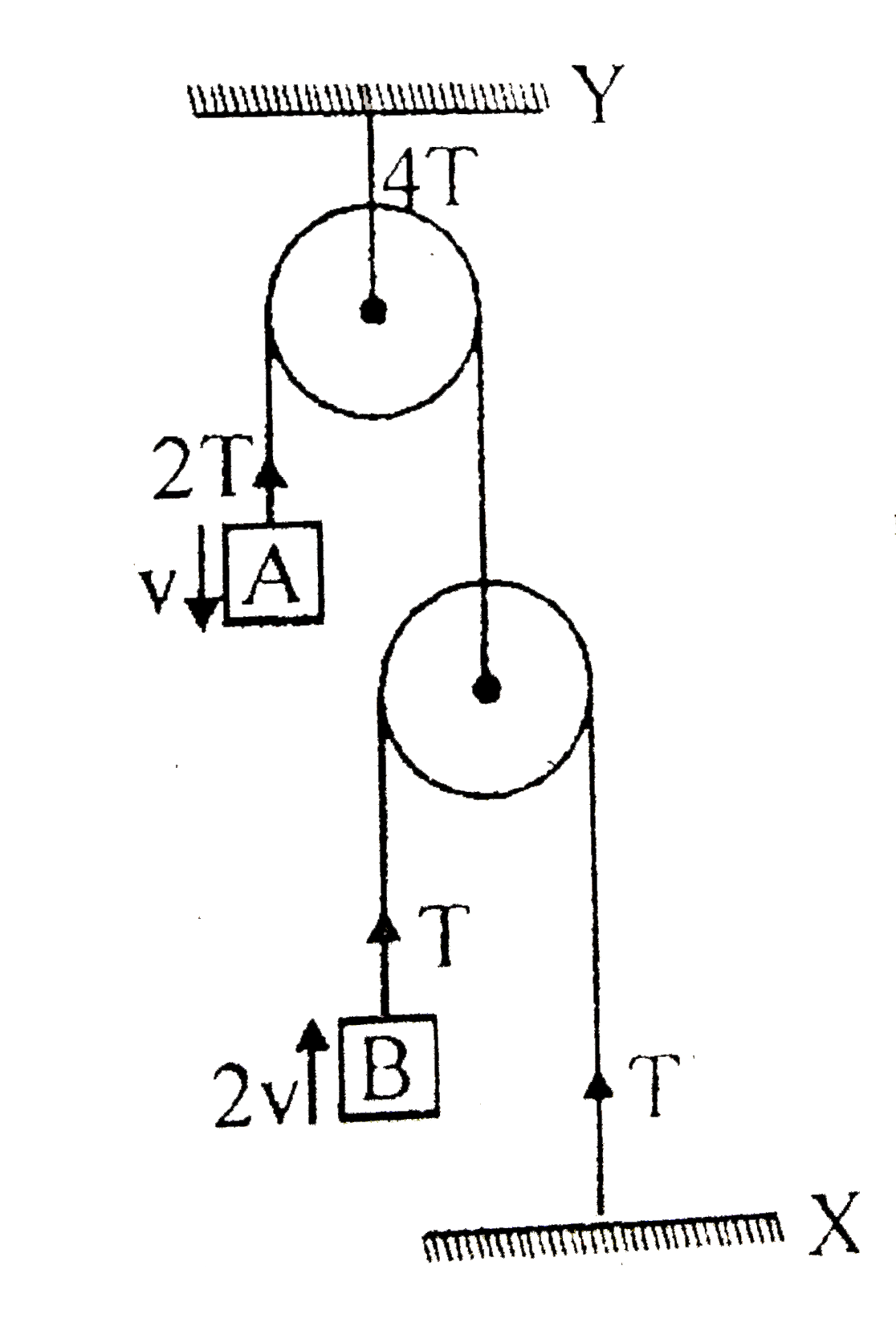Collsion between ball and block A is perfectly inelastic as shown. If impulse on ball (at the time of collision ) is J then

The correct Answer is:(A)T (B)Q (C )R (D) Q
Topper's Solved these Questions
- CENTRE OF MASSBOOK - ALLENCHAPTER - CENTRE OF MASSEXERCISE - EXERCISE-I
40 Videos
- CENTRE OF MASSBOOK - ALLENCHAPTER - CENTRE OF MASSEXERCISE - EXERCISE-II
43 Videos
- BASIC MATHEMATICS USED IN PHYSICS &VECTORS BOOK - ALLENCHAPTER - BASIC MATHEMATICS USED IN PHYSICS &VECTORS EXERCISE - EXERCISE-IV ASSERTION & REASON
11 Videos
- ELASTICITY, SURFACE TENSION AND FLUID MECHANICSBOOK - ALLENCHAPTER - ELASTICITY, SURFACE TENSION AND FLUID MECHANICSEXERCISE - Exercise 5 B (Integer Type Questions)
3 Videos
Similar Questions
Two balls of mass m and 2m each have momentum 2p and p in the direction shown in figure. During collision they exert an impulse of magnitude p on each other.

Column IColumn II(A)After collision momentum of m(p)2p(B)After collision momentum of 2m(q)p(C)Coefficient of restitution between them(r)1(s)None
View SolutionA smooth ball A of mass m is attached to one end of a light inextensible string, and is suspended form fixed point O. Another identical ball B, is dropped from a heigh h, so that the string just touches the surface of the sphere.

Column IColumn I(A)If collision between balls is completely elastic then speed of ball A just after collision is(P)3m5√2gh(B)If collision between balls is completely elastic then impulsive tension provided by string is(Q)√6gh5(C)If collision between balls is completely inelastic then speed of ball A just after collision is(R)6m5√2gh(D)If collision between balls is completely inelastic then impulsive tension provided by string is(S)2√6gh5(T)None of these
View SolutionFor component of vector →A=(3ˆi+4ˆj−5ˆk), match the following table:
Column IColumn II(A)Along y-axis(p)5unit(B)Along another vector(2ˆi+ˆj+2ˆk)(q)4unit(C)Along another vector(6ˆi+8ˆj−10ˆk)(r)Zero(D)Along another vector(−3ˆi−4ˆj+5ˆk)(s)None
View SolutionThe circuit involves two ideal cells connected to a 1μF capacitor via a key K. Initially the key K is in position 1 and the capacitor is charged fully by 2V cell. The key is then pushed to position 2. Column I gives physical quantities involving the circuit after the key is pushed from position 1. Column II gives corresponding results. Match the statements in Column I with the corresponding values in Column II.

Column I Column II(A) The net charge crossing the 4 volt cell in μC is(p) 2(B) The magnitude of work done by 4 Volt cell in μJ is(q) 6(C) The gain in potential energy of capacitor in μJ is (r) 8(D) The net heat produced in circuit in μJ is (s) 16
View SolutionA ball of mass 1 kg is dropped from height 9.8 m, strikes with ground and rebounds at height 4.9 m, if the time of contact between ball and ground is 0.1 s then find impulse and average force acting on ball.
View SolutionTwo bodies collide as shown in the diagram. During the collision , they exert impulse of magnitude J on each other

For what values of J(in N s) the 2 kg block will change its direction of velocity ?
View SolutionA body X with a momentum p collides with another identical stationary body Y one dimensionally. During the collision, Y gives an impulse J to body X. Then coefficient of restitution is
View SolutionTwo identical blocks A and B connected by massless string, are placed on a frictionless horizontal plane. A bullet havig the same mass, moving with speed u strickes block B from behind as shown. If the bullet gets embedded into block B then find

a. the velocity of A,B,C after collision.
b. impulse on A due to tension in the string,
c. impulse on C due to normal force of collision,
d. impulse on B due to normal force of collision.
View SolutionA ball of mass m=1kg falling vertically with a velocity v0=2m/s strikes a wedge of mass M=2kg kept on a smooth, horizontal surface as shown in figure. If impulse between ball and wedge during collision is J. Then make two equations which relate J with velocity components of wedge and ball. Also find impulse on wedges from ground during impact.

View SolutionIn a one dimensional collision between two identical particles A and B, B is stationary and A has momentum p before impact. During impact, B gives impulse J to A.
View Solution

